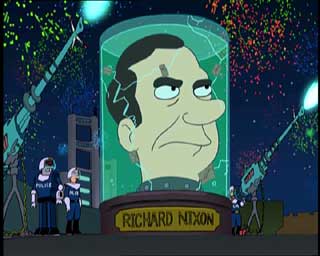Déjà Entendu
Six new CDs from Borders today!! Though I've only sampled three, those alone warrant a post.
Leif Ove Andsnes/Norwegian Chamber Orchestra: Haydn Piano Concertos Nos. 3, 4 & 11
Leif has been a real mixed bag to me. On one hand, his technique emboldens his clear and large interpretative decisions, on the other his interpretation can be very rubbery (see his compulsory Grieg/Schumann concerto release). But I've never been let down by his Haydn - he even made the D Major "Chicken Dance" sonata sound new and exciting.
I was particularly interested in this 2000 release because I picked up the score to the PC No. 11 in D (Hob. XVIII:11) with half an intention of learning it for my next project... I'm still actually torn between that one and the Mozart PC No. 24 in Cm, K. 491.
Anyway, Andsnes takes the "Vivace" marking with the alacrity I've come to expect of him - that's a great thing. As always he demonstrates a supple and playful technique, and on this recording it's complemented with the Norwegian Chamber Orchestra's purity and directness of tone. There's a moment during the development of the first movement where, high above the sturm und drang 1/16th arpeggiated triads in the piano, the flute emerges from the dusky latitudes as a pristinely clear beacon out of the agitated development, nearly turning the black notes on the page white. This movement is a string of beautiful moments like that, and I can't wait to hear what they do with the rest of the movements and concertos on the disc, once I get around to listening to them!
The soloist's pliability and orchestra's straight-tone playing never convey a Mozartean sensibility, though. Except were appropriate, the performers follow every phrase through to the bitter end, making no apologies on the last note. That's the straightforwardness I've really come to respect in Haydn the last few years. Richter said that he loved playing Haydn for that reason, moreso than Mozart. He contended that you could write the easiest scalar passage possible, but if you put Mozart's name above it, it becomes the most difficult thing you've ever encountered. Not so in with Papa Haydn. Those declamatory orhcestral passages introducing the soloist need not be imbrued with nuance - the music speaks for itself.
Speaking of nuance...
Murray Perahia/Academy of St. Martin in the Fields: Beethoven String Quartet No. 12, Op. 127; Piano Sonata No. 28, Op. 101
Some complain about the cultivation in Perahia's playing, deeming it "effeminate." I'll suffer none of that. In this recording, Perahia brings the same subtlety of character and apparently infinite nuance that he performs with on the piano to the podium, conducting a string orchestra transcription of Op. 127. The result is wonderfully musical and expansive. The Adagio movement is, well, miraculous. I can't do it justice in words - take a listen to it yourself and you'll see what I mean.
The quality of the transcription itself is equally outstanding. The basses are added at the perfect moments, and to my delight, not always doubling the cellos! This music (along with just about anything Beethoven wrote) translates extremely well to the larger format, taking on a symphonic depth with these forces.
Perahia's performance of Op. 101 (to which I'm listening right now) clearly benefits from his recent counterpoint studies during his medical reprieve from recording. From the genesis of his career, his playing has always been beautiful and profound, but on this album especially, one is really able to savor the distinct organisms thoughout the work, and the the intercalary masses which exceed the sum of their parts. Even the running thirds speak to each other and the audience with a distinct personality in each voice. Maybe I'm fooling myself - but I don't think so.
Nickel Creek: This Side
Beethoven to Bluegrass? Yeah. I'm not going to explain. I saw this group open for Bela Fleck at Ravinia in June of 2002. That was the summer I spent 32 beautiful evenings at Ravinia. At that show I absolutely adored their instrumental timbre, vocal blend and harmony, and palyful rhythmic texture. It wasn't just Bluegrass either - it was something more. Some Jazz influence, I guess, but that wasn't it. Just great music.
This disc, dated from the same year, is definitely distinctly Nickel Creek, but much of it is darker and more pop-oriented than what I'd expected. The beautiful voices and mandolin/bouzouki texture are there though.
On the tracks that trend closer to the pop-bluegrass feel I'd expected, the music is relentlessly pleasant. It's a treat to listen to, and I sense I'll warm up to the other tracks once I have some time to digest them.
Next post: Lutoslawski, Reiner/CSO Russian Showpieces and the Dave Holland Big Band: Overtime.


<< Home